Ivy (Hedera helix)
Leaves and stem
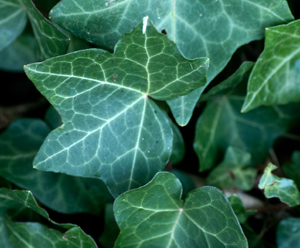
Ivy (Hedera helix) has distinctive leaves, which persist throughout the winter months. They are described as being palmate (shaped a little bit like a spread hand) with 3 to 5 distinct triangular lobes – see adjacent photo.
Generally, the leaves have a dark, ‘bottle green’ colour when mature, except around the veins where the colour is lighter; young leaves may be a brighter green. The leaves are arranged alternately around the stems.
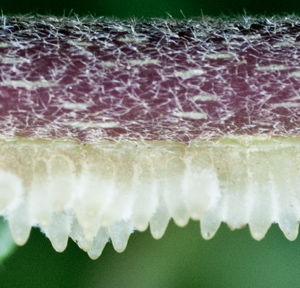
If the plant is climbing up a support like a tree or a wall, where the young stem comes in contact with a surface it forms small, aerial roots; these help ‘bind’ the plant to that surface (see adjacent photo). These adventitious roots secrete a 'glue' that helps them bind to almost any surface. The glue (an arabinogalactan protein complex) has been the subject of recent investigation.[https://www.pnas.org/content/113/23/E3193 ]
Ivy is not a parasite, in that, it does not take food, minerals or water from any tree that it grows on. Apart from these aerial roots, the young stems may have a downy surface (small hairs on the epidermis) – this downy appearance can also be seen on the adjacent photo.
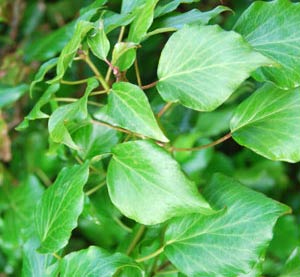
When Ivy reaches the top of a tree or wall or is in bright light, then it tends to form flowers (though late in the year) - see image below. The shoots that bear the flowers have leaves that are completely different shape; these are oval or elliptical in shape
Flowers and Fruits
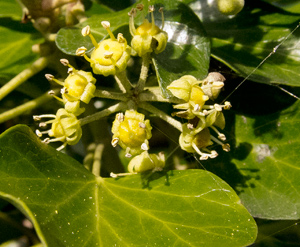
When Ivy reaches the top of a tree or wall or is in bright light, then it tends to form flowers (though late in the year).
The shoots that bear the flowers have leaves that are a different shape; they are oval or elliptical in shape (see adjacent image).
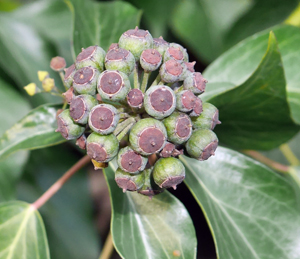
The berry that forms often contain between 3 and 5 seeds (see photo). The berry matures over the winter months, becoming black and is a source of food for birds (like wood pigeons, thrushes etc) and their young in the Spring. The seeds are often dispersed after passing through a bird’s gut.
Ecology and other notes
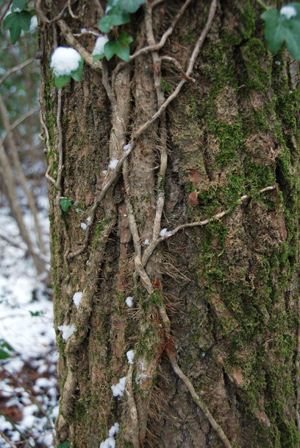
The common ivy (Hedera helix ssp helix) can be found growing in woodlands, hedgerows or on walls. Sometimes it is a climber , as in the image below where it is climbing up a tall conifer - but it can also form a layer at ground level.
It is a woody, evergreen perennial that is distributed throughout much of the British Isles, and many parts of Europe. It can grow in a variety of soil types, and when mature is resistant to many harsh environmental conditions – being particularly tolerant of shade. Ivy is the only UK member of the botanical family known as the Araliaceae; a family that is more often associated with tropical regions.
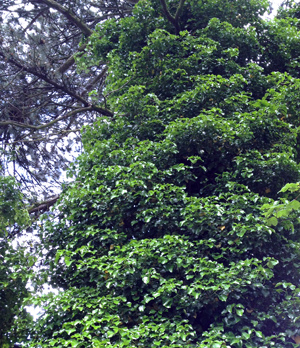
Note :
Ivy is said to be responsible for certain forms of dermatitis and skin rash (in susceptible individuals), further details can be found in the Botanical Dermatology Database
Detailed botanical information on the Common Ivy and the related Atlantic Ivy (H. helix ssp hibernica) can be found in the ‘New Flora of the British Isles” by Clive Stace; also the Plant Heritage site (National Council for the Conservation of Plants and Gardens) is also a useful source of information.